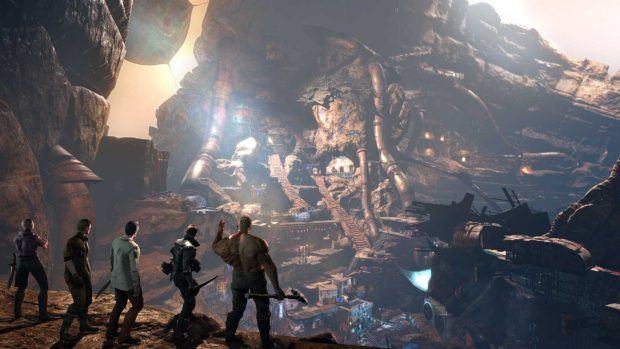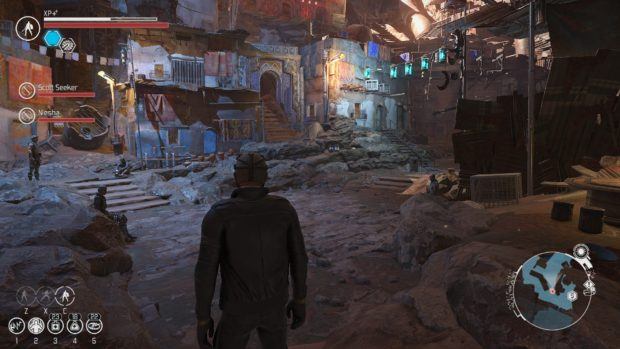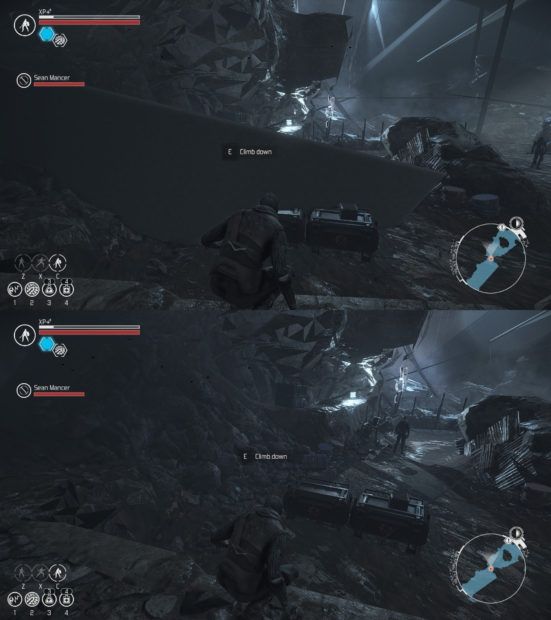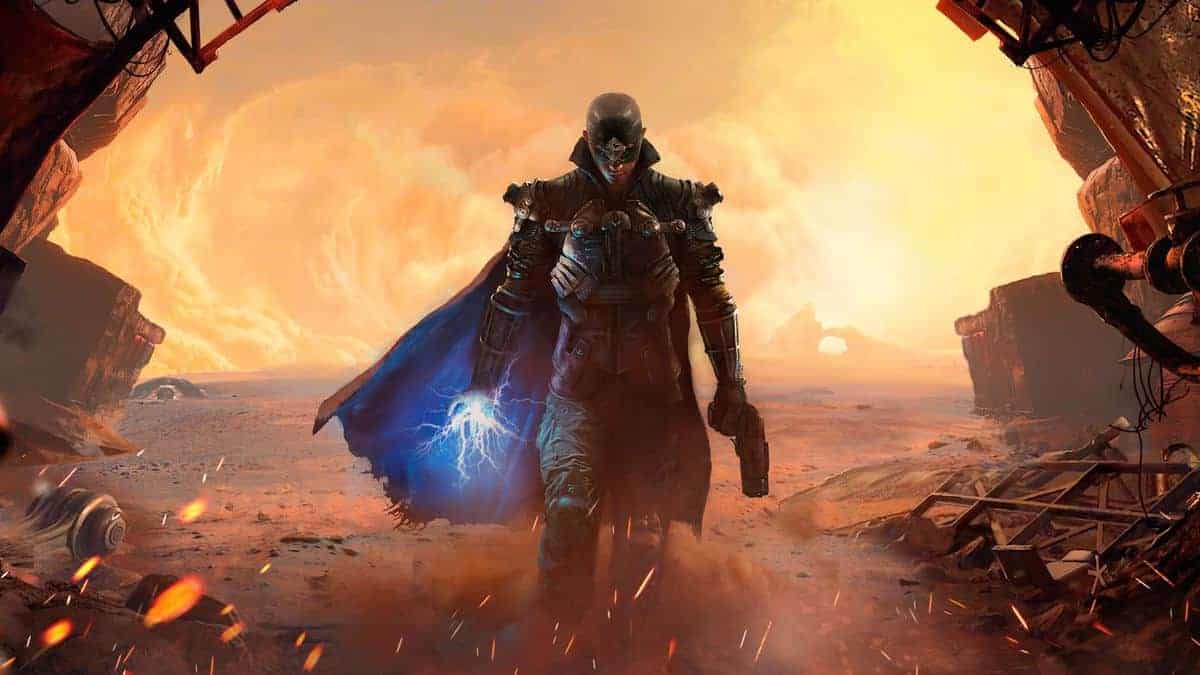In 2013, French studio Spiders and publisher Focus Home Interactive released Mars: War Logs; a cyberpunk role-playing game which was poorly received by the masses. The Technomancer is a sequel to Mars: War Logs, taking place within the same universe but featuring a new protagonist and a much larger, expansive world.
The developer’s first steps on a future colonized version of Mars failed to garner enough appeal from consumers, and the follow-up sequel also falls short in convincing us to return to the red planet.
Set 200 years after Mars was first colonized by humans, water still remains as a valuable resource over which wars continue to be fought, and the tendrils of corruption reach deeper into the planet than ever before.
You fill the shoes of Zachariah, a rookie who goes through an initiation during the game’s initial proceedings to graduate as a true Technomancer. These are referred to as “Mage-Warriors” who have an innate ability to harness the destructive powers of electricity.
Being able to create your character from scratch is always appreciated in any good role-playing game. The Technomancer, however, puts a poor character creation tool in your hands that only gives you the freedom to tweak the outward appearance of Zachariah by deciding between different hair, face, and color presets. There also isn’t the option for a female version, even though you come across female Technomancers during your progression.

Once you’re through the character tweaking process, you enter the (optional) training stage where instructors are standing by to help you become familiar with three different fighting styles. If I were to choose one element that I absolutely loved from my time with the game, it has to be the diverse combat system.
While other games conventionally force players to choose a single fighting style for their progressions, Spiders has made it so that players can switch between different styles on-the-fly, even amidst combat.
The first fighting style involves the use of a Staff, marked as a trademark of any Technomancer. It allows you to use long-ranged melee sweeping attacks in a wide area against groups comprising several enemies.
The second fighting style focuses on agility and the ways of a Rogue, bringing both a Gun and Blade to the fight. The gun allows you to control the pace of combat by interrupting foes from range. The blade on the other hand can poison enemies for significant damage over time, while cutting through them one-by-one with lethal critical attacks.
Dodging and rolling across the battlefield to backstab unsuspecting foes is a setup very dear to me. I always lean towards the Rogue/Stealth option in every role-playing game. Hence, I may have went with the Staff when starting out, I eventually ended up with a Blade and Gun for the much more mobile and high-paced action.
Finally, the third fighting style focuses on defense, allowing you to equip a Shield and Blade. This combat option is the least mobile and can feel sluggish at times. However, the ability to block and parry attacks can prove useful in crucial situations, creating a window of opportunity to reply back with heavy damaging blows.

Your fighting styles are further accentuated with the abilities of Technomancy. Relying on a regenerating resource called “Focus,” a Technomancer can imbue his weapons with electricity to zap enemies on contact. Additionally, you can send out lighting strikes in wide arcs or gain magnetic shields to negate incoming damage.
All of that combat diversity combines to give you a tasteful fighting experience. You don’t necessarily have to rely on a single combat style and can mash them all up in one brutal combo. Use the Rogue’s fast mobility to roll into the fray and place an Exploding Trap before rolling back out. Parry ranged attacks with the shield while you pummel those close to you. Poison enemies with the Rogue and follow with electrical storms using a Staff.
The game’s rather simplistic crafting system comes into play when you want to upgrade your armor and weapons. “Bonus” empty slots within your equipment verify just how many upgrades you can perform; two slots translate into two upgrades only.
Upgrading weapons and armor not only grants improved statistics, but also varied cosmetic upgrades. Choosing to improve energy regeneration has your character sport a bulky mechanical pack on his back, while reducing physical damage usually grants new pauldrons. The aspect of being able to change your look with each upgrade grew on me, and is something I really loved about crafting in the game.
There are numerous crafting materials involved in this process (Leather Straps, Recycled Material, Pieces of Metal, etc.) but none of which can be termed as rare. In fact, you’ll stock up on so much crafting materials within the early-game that they’ll weigh you down, forcing you to either start selling them to a merchant or dropping them in your personal storage chest.

There are four skill trees dedicated to the three aforementioned combat styles and the innate abilities of the Technomancer. Experience gained through completion of quests or successful combat scenarios earn you points that can be spent accordingly to develop your character.
Going through a skill tree also unlocks new abilities, such as the passive ability of Rogues to gain a confirmed critical attack after successfully dodging an attack, or a powerful Gun-blast that almost guarantees to knockback and disrupt enemies.
That being said, just looking at the skill tree makes me wonder whether Spiders decided to play it safe when penning down the unlockable tiers. Most of them seem pointless; just how much disrupting chance do you really need? You’ll hardly be pressed to choose between two paths, since none of that gets reflected in the game. New abilities unlocked need to feel special, something which Spiders completely missed out on.
Speaking of bland, a Technomancer is supposedly a revered icon, respected and feared by all. However, I never felt that from my interactions with the local populace. A well-balanced dialogue system is crucial to any role-playing game, but The Technomancer bungles in this department as well. Poorly written dialogues and conversation prompts leaves our protagonist as the same brooding kid throughout the game.
The only time Zachariah seems relevant is when he has to decide between killing and letting go, which almost every conversation boils down to. The Technomancer tries hard to incorporate a morality system in the game, where you can lose or gain karma depending on your actions. However, it has no profound effect on the storyline, and those senseless killings are not going to haunt you later on.
The Technomancer likes to drag us down a complicated storyline plot with multiple branches that cover political agendas, acts of rebellions and treason. However, each storyline for the numerous factions in the game is kept vague, perhaps on purpose. The good RPGs usually use this to their advantage, building up to a grand finale. The Technomancer fails to do so in this regard, and you’ll sooner find yourself skipping through every conversation.

The cities and environments are all incredibly well-done, perfectly relaying the local or cultural element; from the blissful feeling of entering the merchant city of Noctis, to the morbid ventures down the Slums in Ophir. Unfortunately, wonky NPC AI tries to drag that down as well. Expect to come across some AI trying to walk through walls, characters speaking with you but facing the opposite direction, and others gesturing wildly into the air as if communicating with an unseen person. You’ll hardly notice any expressions on any of the NPC’s faces; be prepared to endure amateurish voice acting, coupled with bad lip syncing.
Much like how there are cities buried under the harsh sand dunes on Mars, there is a good role-playing experience to be had in The Technomancer. However, reaching to that point is going to require some serious excavation. Spiders seemingly had assembled all the required materials on the workbench, but just couldn’t combine them to craft a good sci-fi RPG.
On an ending note, the first stage was packed full of horrendous visual glitches for me. For some reason restarting the game would either clear the issue or make it worse. Here’s me wondering how to reach the enemy target across the barrier, when I twitched the mouse cursor a bit and the truth dawned upon me.

This review was conducted using retail PC downloadable codes provided by Spiders.
